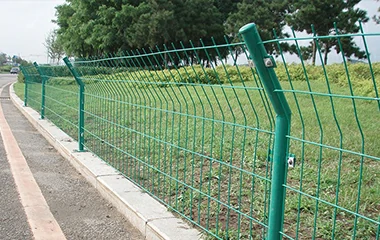 TEL:
+86-13102802206
TEL:
+86-13102802206
 Email:
fencenetting@china.com
Email:
fencenetting@china.com
 Language
Language
 TEL:
+86-13102802206
TEL:
+86-13102802206
 Email:
fencenetting@china.com
Email:
fencenetting@china.com
 Language
Language


The Aesthetic Appeal and Functionality of Decorative Gabion Walls
In the world of landscape design and architectural features, decorative gabion walls have emerged as a practical yet visually appealing solution for various outdoor spaces. These innovative structures, made from wire mesh cages filled with natural stones or other materials, offer a unique blend of durability and aesthetic charm that can enhance any environment.
What Are Gabion Walls?
Gabion walls, derived from the Italian word gabbione, meaning big cage, have their roots in military engineering, where they were initially used as protective barriers. Today, they have transformed into a versatile design element for gardens, parks, and commercial landscapes. The walls are comprised of interconnected wire mesh baskets filled with stones, rock, or even recycled materials, providing both structural integrity and a modern rustic appeal.
Aesthetic Versatility
One of the most striking features of decorative gabion walls is their versatility in design. They come in various shapes and sizes and can be customized to meet specific aesthetic preferences. Whether used as a retaining wall, privacy screen, or decorative element, gabion walls can be adapted to blend seamlessly into their surroundings. By choosing different types of stones, colors, and textures, homeowners and designers can create an eye-catching focal point that complements the natural landscape.
For instance, smooth river stones can lend a contemporary flair, while rugged, uneven rocks may evoke a more rustic, natural feel. This adaptability allows for endless creative possibilities, making gabion walls a favorite among landscape architects and DIY enthusiasts alike.

Functional Benefits
Beyond their visual appeal, decorative gabion walls offer numerous functional benefits. Their sturdy construction ensures resistance to weather elements, soil erosion, and pressure, making them an excellent choice for retaining walls or garden borders. The porous nature of gabion walls also facilitates drainage, preventing water accumulation and soil saturation, which can be detrimental to traditional wall structures.
Moreover, gabion walls can contribute to environmental sustainability. By utilizing locally sourced stones or recycled materials, they can significantly reduce the carbon footprint compared to traditional building materials. Additionally, gabion walls provide habitats for local wildlife and promote biodiversity in urban settings, as the gaps between stones can accommodate various plants and small animals.
Easy Installation and Maintenance
Another advantage of decorative gabion walls is their relatively simple installation process. Unlike traditional masonry walls, which require skilled labor and extensive resources, gabions can be assembled quickly, allowing for a hassle-free setup. They typically require minimal maintenance; occasional cleaning and checks for structural integrity are usually all that is needed to keep them in prime condition.
Conclusion
In summary, decorative gabion walls are an excellent choice for anyone looking to enhance their outdoor spaces with a structure that marries beauty and function. Their unique designs can elevate the aesthetic appeal of gardens, parks, and commercial properties while offering durability and environmental benefits. As a sustainable solution that promotes biodiversity and is easy to install and maintain, gabion walls are paving the way for a new era in landscape architecture. Whether you're aiming to create a tranquil retreat, an elegant garden boundary, or a stunning feature wall, decorative gabion walls are undoubtedly a worthy consideration.